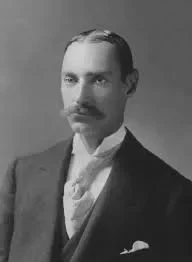Real Celebrities Never Die!
OR
Search For Past Celebrities Whose Birthday You Share

source:wikipedia.org
John Jacob Astor IV
Birthday:
13 Jul, 1864
Date of Death:
15 Apr, 1912
Cause of death:
Sinking of the Titanic
Nationality:
American
Famous As:
Business magnate
Age at the time of death:
47
Early Life
John Jacob Astor IV’s name is etched in history as both a symbol of opulence and a life cut short by the tragedy of the RMS Titanic. Born on July 13, 1864, at his family’s grand estate, Ferncliff, in Rhinebeck, New York, Astor was the youngest son of William Backhouse Astor Jr., a prominent businessman, and Caroline Webster “Lina” Schermerhorn, a celebrated socialite.
Astor’s childhood was one of privilege and opportunity, deeply rooted in the elite circles of Gilded Age America. Educated at St. Paul’s School in New Hampshire and later at Harvard University, he was groomed to uphold the legacy of one of the wealthiest families in the United States.
Career
Astor’s professional endeavors showcased his multifaceted talents. He inherited significant wealth but didn’t rest on his laurels. Instead, he ventured into real estate development, a field in which he left an indelible mark. Among his notable achievements was the construction of the Astoria Hotel, which became part of the iconic Waldorf-Astoria Hotel—a beacon of luxury in New York City.
John Jacob Astor IV also delved into science fiction, penning the novel “A Journey in Other Worlds” in 1894. The book, set in the year 2000, speculated about life on Saturn and Jupiter, reflecting his forward-thinking nature.
His sense of duty extended to military service, where he served as a lieutenant colonel during the Spanish–American War, leading a U.S. Army regiment in Cuba.
Personal Life & Titanic
Astor’s personal life was as grand as his professional one, marked by wealth, romance, and scandal. In 1891, he married socialite Ava Lowle Willing, with whom he had two children: Vincent and Ava. However, the couple divorced in 1910, a rare occurrence in high society at the time.
Astor remarried in 1911 to Madeleine Talmage Force, a union that drew both fascination and criticism due to their age difference—Madeleine was just 18. The couple embarked on an extended honeymoon across Europe and the Middle East, a journey that brought them aboard the Titanic for their return to the United States.
On April 15, 1912, tragedy struck. Astor, the wealthiest passenger on the ill-fated ship, ensured that his pregnant wife and her maid were safely placed in a lifeboat. He reportedly asked to join them, citing Madeleine’s condition, but his request was denied.
John Jacob Astor IV was last seen on the ship’s deck, calmly smoking a cigarette, embodying composure amid chaos. His body was later recovered by the cable ship Mackay-Bennett and buried in Trinity Church Cemetery in New York City.
John Jacob Astor IV's Quote's
Legacy Beyond Tragedy
John Jacob Astor IV’s life was a tapestry of ambition, innovation, and tragedy. His contributions to real estate helped shape the skyline of New York City, while his ventures into literature and service showcased his diverse interests. Though his life ended prematurely at the age of 47, his legacy as a symbol of the Gilded Age endures.
The story of Astor’s life—and death aboard the Titanic—remains a poignant reminder of both the heights of human achievement and the unpredictability of fate.
Name:
John Jacob Astor IV
Popular Name:
John Jacob Astor IV
Gender:
Male
Cause of Death:
Sinking of the Titanic
Spouse:
Place of Birth:
Rhinebeck, New York, U.S.
Place of Death:
North Atlantic Ocean
Occupation / Profession:
Personality Type
Entrepreneur: Smart, energetic and very perceptive people, who truly enjoy living on the edge. Astor possessed great businessman acumen which was evident from his several successful investments.
Astor inherited a vast fortune from his family's real estate investments.
He served as a colonel during the Spanish-American War.
At the time of his death, he was one of the richest men in America.
He built the luxurious Waldorf-Astoria Hotel in New York City.
John Jacob Astor IV was the richest passenger aboard the Titanic.